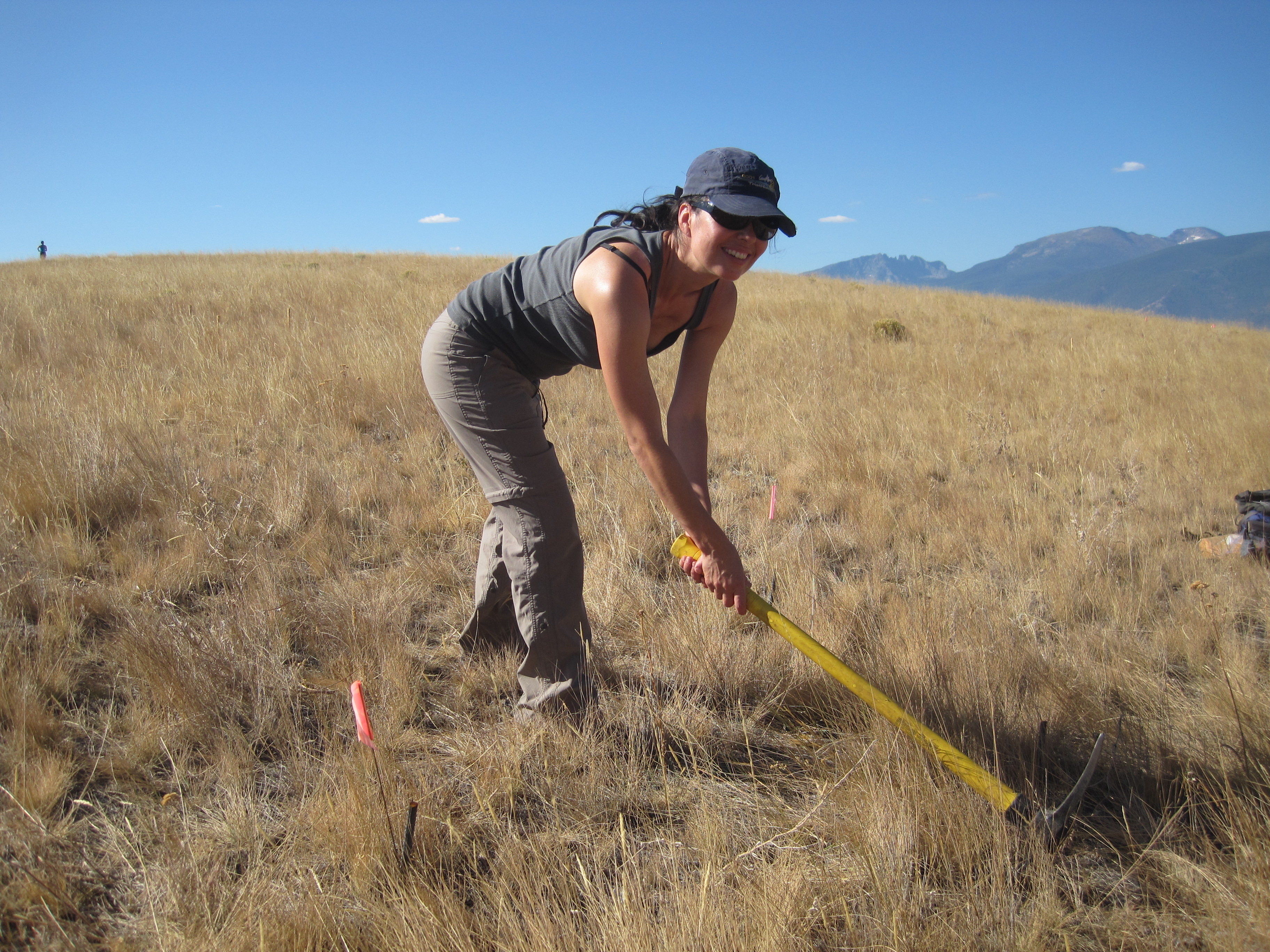
Getting a Handle on Invasive Plants
Block title
 By: Ylva LekbergPh.D. Ecologist
By: Ylva LekbergPh.D. EcologistMany plants of Eurasian origin are invasive in Montana, presumably because they have escaped their natural enemies, found empty niches to occupy, and/or adjusted well to changing environments. However, these assumptions are backed by surprisingly little data, so this week a crew from the Rocky Mountain Research Station (US Forest Service) arrived at MPG Ranch to try to get some answers.
RMRS researchers, Dr. Dean Pearson and Yvette Ortega, started an experiment to assess if alien species grow better away from home. They planted seeds of 19 species that are found in Montana but are native to Turkey, and they will monitor seedling growth and establishment. To understand the role of disturbance in facilitating invasion for each species, they planted seeds in both disturbed and undisturbed soil. They will also monitor herbivore attack to see if, for example, some species are heavily impacted by herbivores in the native range, but released from herbivory in the invaded range. The same experiment is done in Turkey, and results will help develop better prescriptions for managing invasive species, and determine if plants truly go wild when they move away from home. For more information on research by this group, see http://www.rmrs.nau.edu/wildlife/invasives/.
Yvette Ortega applies the disturbance treatment before planting seeds. All plants will be removed prior to seed set to prevent establishment of new invasive plants on MPG Ranch.

About the AuthorYlva Lekberg
Ylva graduated from the Swedish University of Agricultural Sciences with a M.Sc. in Biology and Horticulture in 1996 and a Ph.D. in Ecology from Penn State University in 2004. She received the Alumni Association Dissertation Award for her work in agroecology and subsistence farming in Sub-Saharan Africa. Post-doctoral positions at Montana State University and later at Copenhagen University as a Marie Curie Fellow allowed her to explore the role of arbuscular mycorrhiza, a root-fungus symbiosis, for geothermal plants in Yellowstone National Park and coastal grasslands in Denmark. Her research has been published in international journals such as Nature Communications, Ecology Letters, and New Phytologist.
Ylva joined MPG Ranch in 2010. Since then, she has explored how invasive plants common to western Montana, including spotted knapweed (Centaurea stoebe), leafy spurge (Euphorbia esula) and cheatgrass (Bromus tectorum), influence soil microbial community composition and function, and how this in turn may affect invasive success. A lot of her research also focuses on the AM symbiosis in terms of community ecology and physiology. A current project addresses how exchange ratios in this symbiosis may differ among co-occurring plants and depend on soil nutrient availabilities. She uses surveys, field and greenhouse experiments, and literature approaches such as meta-analyses to address questions. To learn more about research and publications from Ylva and her group, see CV below and the Soils, Plants and Invasion section.
In addition to her work at MPG Ranch, Ylva is an adjunct professor at University of Montana at the Department of Ecosystem and Conservation Sciences.
Ylva joined MPG Ranch in 2010. Since then, she has explored how invasive plants common to western Montana, including spotted knapweed (Centaurea stoebe), leafy spurge (Euphorbia esula) and cheatgrass (Bromus tectorum), influence soil microbial community composition and function, and how this in turn may affect invasive success. A lot of her research also focuses on the AM symbiosis in terms of community ecology and physiology. A current project addresses how exchange ratios in this symbiosis may differ among co-occurring plants and depend on soil nutrient availabilities. She uses surveys, field and greenhouse experiments, and literature approaches such as meta-analyses to address questions. To learn more about research and publications from Ylva and her group, see CV below and the Soils, Plants and Invasion section.
In addition to her work at MPG Ranch, Ylva is an adjunct professor at University of Montana at the Department of Ecosystem and Conservation Sciences.




















